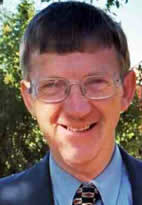| Environmental Related Research | ||
| Home > Research > Environmental Related Research | ||
Clean-up of contaminated land |
Dr
Rod Lynch
|
|
It is important to be able to predict how contaminants will move through the soil, and laboratory experiments are used to model real life spillage situations, and to check computer models. The laboratory models need to measure how the pollutant concentration changes with position and time. Soil samples can be taken, for chemical analysis, but this may destroy the model. We have been developing fibre-optic sensors which can be placed in the soil, and provide real-time information of pollutant concentrations during the spillage test. Different sensors have been developed for different tasks. For dye tracers and for a coloured pollutant, such as copper solution, fibre-optic photometric sensors buried in the soil have been used to provide real-time concentration measurements, based on the light absorbance of the pollution plume. Another potentially useful development is a conical-shaped probe which is able to detect the presence of non-aqueous pollutant in the soil, based on the difference between the refractive index of water and that of the pollutant. These techniques will be useful for future studies of pollutant transport and clean-up of contaminated land.
|

E-mail Other environmentally related projects: |
||